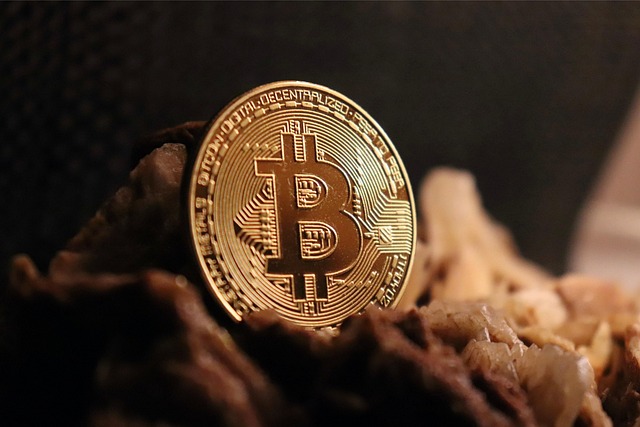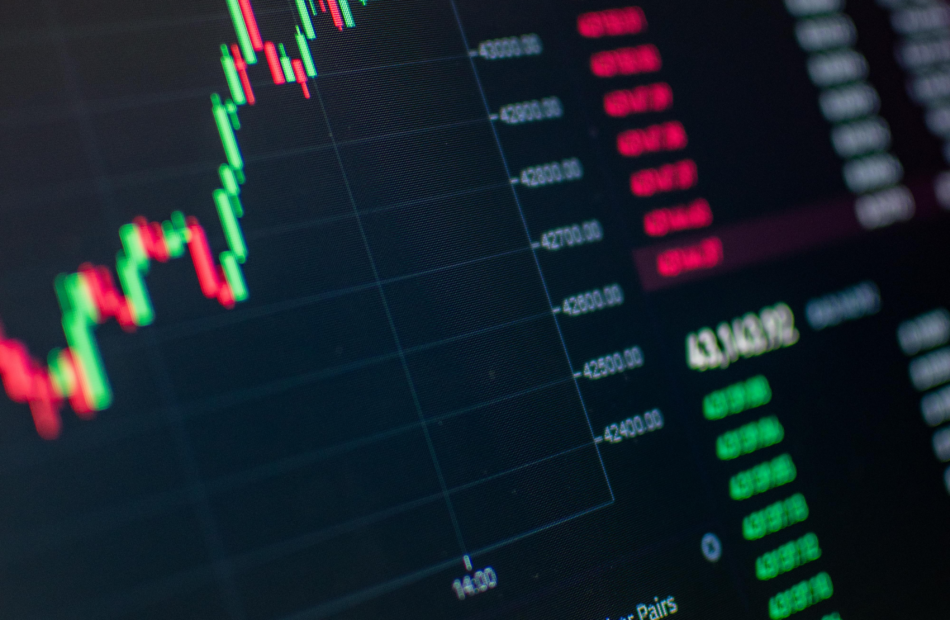Anti-Elon Musk protests 2025: Everything you need to know
Why are people protesting against Elon Musk? Elon Musk, once celebrated as a tech visionary behind Tesla and SpaceX, has faced growing backlash due to his political ties, controversial corporate decisions and provocative public statements.Born in 1971 in Pretoria, South Africa, Elon Musk co-founded Zip2 in 1995, which was sold to Compaq in 1999. He then launched X.com, which merged with Confinity to form PayPal, acquired by eBay in 2002. His later ventures, SpaceX (2002) and Tesla (2004), solidified his status as a leading innovator in aerospace and electric vehicles. In 2022, Musk acquired Twitter for $44 billion and later rebranded the platform as X, integrating it into his broader vision for an “everything app.”Initially celebrated for his technological contributions, Musk’s public image began to shift in the late 2010s for several reasons:Political involvement: Musk’s association with conservative politics, notably his support for US President Donald Trump and his role as head of the Department of Government Efficiency (DOGE), drew criticism. His advocacy for significant federal spending cuts and program eliminations fueled discontent.Corporate practices: Decisions like relocating Tesla’s headquarters from California to Texas and implementing controversial labor practices contributed to negative perceptions. These actions were seen as prioritizing profit over employee welfare and regulatory compliance.Public statements: Musk’s public communications, especially on social media, often sparked controversy. Critics accused him of spreading misinformation and promoting conspiracy theories, which eroded trust among certain groups.Did you know? Despite popular narratives of Elon Musk as a self-made entrepreneur, he came from a wealthy South African family. His father, Errol Musk, is suspected of owning an emerald mine in Zambia, and Elon has acknowledged receiving financial support from his family during his early ventures. Anti-Elon Musk protests in 2025 By 2025, the aforementioned factors culminated in widespread protests targeting Musk and his business interests. The demonstrations were driven by core grievances:Wealth disparity: Musk’s net worth, which reached $400 billion in December 2024, had declined to $298 billion by April 2025 due to stock market fluctuations and political controversies. His accumulation of wealth highlighted growing economic inequalities, with protesters viewing it as emblematic of systemic issues favoring the ultra-wealthy.Political influence: Musk’s significant political engagement, particularly his advisory role to Trump and influence over DOGE policies, has raised concerns about the concentration of power among wealthy elites. Critics feared this influence undermined democratic processes and prioritized corporate interests over public welfare.Corporate practices: Actions such as aggressive cost-cutting measures, perceived labor exploitation and controversial business decisions led to dissatisfaction among employees and consumers. The “Tesla Takedown” movement, for example, targeted Tesla showrooms, criticizing Musk’s leadership and corporate strategies.Social and environmental concerns: Musk’s business decisions were also scrutinized for their social and environmental impact. Protesters questioned Tesla’s labor practices and the environmental implications of some of his ventures, calling for more ethical and sustainable corporate behaviors.Did you know? A March 2025 Brookings op-ed called DOGE’s naming choice a “branding blunder,” while a CNN/ORC poll found 62% of respondents viewed it as “inappropriate” for a government agency and 44% felt it damaged confidence in the administration’s reform efforts. Tesla protest events in 2025 The “Tesla Takedown” movement, with demonstrations in over 250 cities worldwide, aimed to challenge Musk’s influence. Originating in early 2025, this grassroots initiative organized nonviolent protests at Tesla locations across the US, Canada, Europe and Australia.Protesters called for boycotts and urged the public to divest from Tesla by selling their vehicles and shares, intending to economically impact Musk and question his political influence.Two key factors fueled the protests:Labor practices: Tesla faced allegations of labor rights violations, including reports of employees being fired for expressing dissenting opinions. The National Labor Relations Board had 24 open investigations into Musk’s companies, including allegations of illegal firings at SpaceX.Environmental concerns: Protesters criticized Tesla’s environmental record, highlighting issues such as alleged negligence in the installation and maintenance of solar panels, which led to roof fires at Walmart stores. Walmart filed a multimillion-dollar lawsuit against Tesla, claiming negligent installation and maintenance of solar panels caused roof fires at seven Walmart stores dating back to 2012.Declining sales figures underscored consumer discontent. In the first quarter of 2025, Tesla’s global vehicle deliveries dropped 13% year-over-year to 336,681 units, marking the company’s lowest quarterly performance since mid-2022.Did you know? While intended to be peaceful, some protests escalated into acts of vandalism. For example, on March 24, 2025, incendiary devices were discovered at a Tesla dealership in Austin, Texas. SpaceX controversy 2025 SpaceX’s activities also attracted scrutiny, particularly regarding safety and regulatory compliance. The 2025 Starship explosion served as a stark reminder of the risks associated with private space exploration. The largest and most powerful rocket ever built disintegrated minutes after liftoff, scattering debris across protected areas and reigniting debates about safety, environmental responsibility and regulatory oversight in the private spaceflight industry.Musk’s political involvement further complicated matters. Serving as the head of DOGE, he oversaw significant federal spending cuts and deregulation efforts. This role led to conflicts of interest, especially concerning agencies that regulate his businesses. For example, SpaceX faced fines from the Federal Aviation Administration for safety violations, including operating an unapproved launch control room and using non-approved rocket fuel, totaling $633,009. What does the future hold for Elon Musk amid growing backlash? Musk’s entanglement in political affairs, particularly his advisory role to President Trump and leadership of DOGE, has led to significant public disapproval. A February 2025 poll indicated that 52% of Americans held an unfavorable view of Musk, with only 29% expressing approval.In response to the mounting criticism, reports suggest that Musk is considering stepping back from his governmental advisory role to focus on his business ventures. Such a move could be aimed at mitigating public perception that his political activities are adversely affecting Tesla’s performance.However, given Musk’s history of unconventional decisions and resilience, it’s uncertain whether distancing himself from politics will fully quell public dissent or restore consumer confidence in Tesla.
Top Bitcoin miners produced nearly $800M of BTC in Q1 2025
The largest publicly traded Bitcoin mining companies produced nearly $800 million worth of Bitcoin in the first quarter of 2025, reflecting continued growth across the sector as Bitcoin prices held near record highs.According to publicly available data compiled by Cointelegraph, the top Bitcoin mining companies produced over 9,700 Bitcoin (BTC) in the first quarter. With Bitcoin trading at around $81,600 at the time of writing, the total production was valued at around $800 million. Marathon Digital, the biggest Bitcoin mining company by market capitalization, led the pack with 2,285 Bitcoin (worth roughly $186 million) mined in Q1. On April 3, Marathon announced that it produced 829 BTC in March, up 17.4% from February and 10.5% higher than January.Related: Bitcoin miner Bitfarms secures up to $300M loan from MacquarieBitcoin miners produce 9,746 BTC in Q1 2025CleanSpark followed with 1,950 BTC mined in Q1, valued near $160 million. CleanSpark’s March performance also saw a 13.4% increase month-on-month. Iren, formerly Iris Energy, produced the third-highest amount for the quarter. The mining firm reported a total of 1,513 BTC, worth almost $124 million. Its 533 BTC produced in March was a 16.1% increase from its February performance. CompaniesMarketCap places Iren as the sixth-largest Bitcoin miner by market capitalization. Riot Blockchain, which ranks second only to Marathon Digital by market capitalization, had the fourth-largest BTC production during the quarter. The company reported production of 1,428 BTC (about $117 million) during the quarter. Like Iren, Riot produced 533 BTC in March, a 13.4% increase from February. Top Bitcoin miners by market cap. Source: CompaniesMarketCapHut8 shows 91% growth in Bitcoin productionHut 8 Mining, despite producing the least amount of Bitcoin among the top miners reviewed, showed the highest growth rate. The company mined 199 BTC in Q1 valued at about $16 million, including 88 BTC in March. That represents a 91% increase from the 46 BTC it produced in February.On March 31, Hut8 partnered with US President Donald Trump’s sons, Donald Trump Jr. and Eric Trump, to launch a new mining venture called American Bitcoin. The project aims to be the “world’s largest, most efficient pure-play Bitcoin miner.”In a previous Cointelegraph interview, Hut 8 CEO Asher Genoot said the company aims to dominate US Bitcoin mining. Genoot said the company plans to build one of the largest and most efficient Bitcoin mining platforms rooted in American soil. Magazine: Memecoin degeneracy is funding groundbreaking anti-aging research
Bitpanda secures third MiCA license in home jurisdiction of Austria
Austrian fintech unicorn Bitpanda has secured its third license under the European Union’s Markets in Crypto-Assets Regulation (MiCA) framework, further expanding its regulatory footprint across the bloc.Bitpanda announced on April 10 that it would receive a new MiCA license from Austria’s Financial Market Authority (FMA), its third after approvals from regulators in Germany and Malta.Its latest approval marks “another step toward building the most regulated crypto platform in Europe,” the exchange said in an announcement on X.Source: BitpandaMiCA, which took full effect on Dec. 30, 2024, is designed to provide a harmonized legal framework for crypto asset service providers (CASPs) across the EU. Despite this goal, Bitpanda’s pursuit of multiple licenses raises questions about how consistently MiCA is being interpreted and enforced across the bloc.Bitpanda’s MiCA collection storyVienna-headquartered Bitpanda was one of the first crypto asset service providers (CASP) to receive a MiCA license after the framework entered into full force.Germany’s Federal Financial Supervisory Authority (BaFin) was the first regulator to issue a MiCA license for Bitpanda, the firm announced on Jan. 23.According to Bitpanda’s announcement on LinkedIn, it subsequently secured another MiCA license from the Malta Financial Services Authority (MFSA).Related: Malta regulator fines OKX crypto exchange $1.2M for past AML breaches“Following yesterday’s announcement of our first MiCAR license, this second license sends a clear message: Bitpanda is setting the standard as Europe’s most secure and well-regulated crypto platform,” the company wrote.Bitpanda announced receiving a MiCA license from the MFSA in a LinkedIn post. Source: LinkedIn posting date extractorAt the time of publication, none of the relevant regulators — Austria’s FMA, Germany’s BaFin, or Malta’s MFSA — maintain publicly available registries showing which firms have received MiCA licenses.Data from Austria’s Financial Market Authority on Bitpanda’s licensing. Source: FMAAccording to Austria’s FMA records, Bitpanda currently holds four different approvals in Austria and Germany for entities including Bitpanda Asset Management GmbH, Bitpanda Financial Services GmbH, Bitpanda GmbH and Bitpanda Payments GmbH.Does MiCA provide for multiple licenses in EU states?Proposed in 2020, the MiCA framework is designed to set comprehensive regulations for CASPs across the EU, creating “uniform EU market rules for crypto-assets,” according to a key MiCA regulator, the European Securities and Markets Authority.Despite MiCA’s aim to harmonize crypto regulation across the EU, Bitpanda’s pursuit of multiple licenses suggests regulatory inconsistencies may still exist among member states.Cointelegraph approached Bitpanda for comment regarding its approach to securing multiple MiCA licenses but did not receive a response at the time of publication.Magazine: How crypto laws are changing across the world in 2025
What are Ghibli memecoins, and why are they gaining popularity on Solana?
What is GHIBLI memecoin? Ghiblification (GHIBLI) is a memecoin built on the Solana blockchain. It draws inspiration from the Ghibli-styled ChatGPT-generated images, which are influenced by the aesthetic work of Studio Ghibli, a Japanese animation studio. The token gained viral traction shortly after its launch on March 25, 2025, via the @ghibli account on X.Riding a wave of community-generated content on social media, particularly X, GHIBLI saw a sharp price rise, peaking at $0.03918 on March 28, 2025, before declining to $0.0033 by April 7. During this period, its market capitalization fell from $39.179 million to $3.37 million. In its first 24 hours, the GHIBLI/SOL trading pair jumped 37%, signaling strong investor interest. Some traders view this as a hopeful signal for the memecoin sector, which has slumped by more than 50% since December 2024. The total token supply of GHIBLI memecoin is capped at 1 billion, with over 999 million currently in circulation.Studio Ghibli, founded in 1985 by Hayao Miyazaki, Isao Takahata and Toshio Suzuki, is known for its meticulously hand-drawn animation, richly detailed backgrounds and emotional storytelling. By April 7, 2024, the studio had produced 22 full-length animated features. Some well-known films by the studio include Grave of the Fireflies (1998), Spirited Away (2001) and The Tale of the Princess Kaguya (2013).GHIBLI reflects the emerging pattern of memecoins driven by cultural references and movements. It follows in the footsteps of the CHILLGUY token launched on the Solana blockchain on Nov. 15, leveraging the viral “Just a chill guy” meme. By Nov. 27, CHILLGUY propelled to a $643-million market capitalization, though its value sharply declined later. Memecoins are cryptocurrencies that take a humorous jab at mainstream cryptocurrencies and their disruptive aspirations against traditional finance. Their very existence stems from viral internet memes. Since the introduction of ChatGPT’s image generation feature, several memecoins linked to the feature have emerged on the Solana and Ethereum blockchains.Did you know? The studio’s name, “Ghibli,” is derived from a Libyan Arabic word meaning a hot desert wind. How to buy GHIBLI on a Solana-based DEX To purchase GHIBLI memecoin on a Solana-based DEX, you need to set up a wallet, acquire SOL, connect to a DEX, and swap SOL for GHIBLI.Here is a step-by-step guide on how to purchase GHIBLI memecoin on a Solana-based decentralized exchange (DEX):Step 1: Set up a cryptocurrency walletInstall Trust Wallet by downloading it from the official Trust Wallet website or Google Play Store.Complete the setup process.Securely store your seed phrase. It is essential to recover your wallet if any issues arise.Step 2: Acquire SOL and transfer it to your walletPurchase Solana (SOL) on a centralized exchange like Binance or another platform that facilitates SOL trading.Transfer the SOL to your Trust Wallet address via the Solana network. Step 3: Connect to a DEXVisit a Solana-supported DEX.Connect your Trust Wallet to the platform.Step 4: Purchase GHIBLIAfter connecting your wallet, locate a trading pair like SOL/USDT or SOL/GHIBLI on the DEX.Specify how much SOL you want to swap for GHIBLI and finalize the transaction.Once the swap is complete, the GHIBLI tokens will appear in your Trust Wallet.Did you know? Studio Ghibli, known for its whimsical and dreamlike animation style, puts a strong emphasis on hand-drawn animation, even in the digital age. GHIBLI memecoins — From AI art to crypto craze The rise of GHIBLI memecoins began with the viral impact of OpenAI’s ChatGPT-4o update on March 25, 2025. This update introduced a unique feature that allowed users to transform regular images into the iconic art style of Studio Ghibli. GHIBLI represents a growing trend of anime-themed tokens gaining traction, fueled by increasing interest in both Japanese animation and AI-generated art. Days after the launch of GHIBLI anime images, an overwhelming number of users, including influencers and politicians, started using ChatGPT to transform their images into art. This intense interest in the new image-generation capability resulted in an 11% increase in global downloads and a 5% rise in weekly active users compared to the previous week of launch, while in-app purchase revenue also grew by 6%. According to data from market research firm Similarweb, the number of average weekly active users breached the 150 million mark for the first time in 2025. The extensive demand placed a significant load on OpenAI’s servers, leading to temporary restrictions on users accessing the tool.As Ghibli-style images flooded social media, the Ghiblification phenomenon quickly inspired a new wave of anime-themed memecoins. These tokens, themed after Studio Ghibli’s timeless creations like Howl’s Moving Castle and Kiki’s Delivery Service, captured the imagination of crypto enthusiasts. Rather than offering traditional utility, Ghibli memecoins thrive on cultural nostalgia and online hype.Leading the movement is GHIBLI, which became the face of the trend. What began as a viral AI art trend soon evolved into a full-blown crypto sensation, transforming playful creativity into market momentum almost overnight.Interestingly, similar memecoins failed to gain traction. For instance, Ghibli Rizzler (GRIZLLER) attained a market capitalization of $6,000, while Ghibli Sigma (GIGMA) and Ghibli Mona Lisa (GLISA) fared even worse, reaching meager market caps of just $4,200 and $3,800, respectively.Most memecoins are created anonymously, making it very difficult to verify if they are legitimate or safe investments. Only investors with advanced Web3 skills can access the vetting methods necessary to determine the legitimacy of these projects, as the available vetting tools primarily require a high level of Web3 expertise.Did you know? Sam Altman, founder and CEO of OpenAI, has suggested an upcoming version of the feature, which will be more advanced than the current one. No wonder the next version of the anime images tool propels another memecoin spree. What fueled the GHIBLI memecoin surge? The way GHIBLI memecoin prices fluctuate isn’t just by chance; it’s driven by a blend of cutting-edge technology, celebrity buzz and a market eager to chase the next big trend.Backing by top tech influencersTech influencers like Sam Altman and Elon Musk helped amplify the trend. On March 27, 2025, just after the launch of the GHIBLI feature — Musk posted a hilarious image of himself as Rafiki from The Lion King, raising a Dogecoin mascot in the air. That post alone triggered massive attention for Ghibli-themed tokens.Five days later, on April 6, Altman also posted a playful Ghibli-themed image on X, giving another push to the image-generating feature.Joining the Ghibli trend, Binance co-founder and ex-CEO Changpeng Zhao updated his X profile picture in the style of the animation studio. White House crypto czar David Sacks also participated, sharing a Ghibli-esque image of himself with the US president working in the office.Massive market gainsPost-launch, GHIBLI experienced a sharp rise in value, exceeding 40,000% within a 24-hour period. Getting listed on exchanges like Gate.io and Binance Alpha added credibility to the token and sparked a wave of FOMO (fear of missing out) among investors eager for big returns.Emotional appealStudio Ghibli’s storytelling and beloved characters evoke strong emotional connections worldwide. Their timeless charm blends perfectly with the memecoin formula of fun, fandom and hype. For many, buying GHIBLI tokens feels like honoring their favorite anime memories while riding the wave of a hot trend.Vibrant communityOn social media, GHIBLI’s community is thriving. Users have been sharing memes, tips and posts out of excitement and are pumping the token in the process. The energy resembles the early Dogecoin (DOGE) days, though it has an anime twist with GHIBLI. Risk factors concerning GHIBLI memecoin Potential investors in GHIBLI should consider volatility, possible legal issues and the ethical considerations highlighted by Studio Ghibli’s leadership.Here’s what you need to know:Volatility and trend dependency: Ghibli memecoins, while currently popular, are highly susceptible to the transient nature of internet trends. Their value is closely tied to the trend of ghiblification. As this trend loses steam, the tokens’ appeal and market value are likely to go down as well. Historical precedents, such as the rapid rise and fall of memecoins like CHILLGUY, highlight the probability of significant losses after the initial excitement subsides.Legal and ethical considerations: Studio Ghibli has a history of actively protecting its intellectual property. The studio has previously taken legal action against unauthorized use of its artwork, emphasizing its commitment to safeguarding its creations. The emergence of Ghibli-themed memecoins and AI-generated art raises concerns about potential copyright infringements. Studio Ghibli could pursue action against organizations that take advantage of its distinctive style without permission, especially if such use dilutes the brand value of the studio. Miyazaki’s stance on AI and artistic integrity: Hayao Miyazaki, co-founder of Studio Ghibli, strongly disapproves of AI-generated art. In a 2016 documentary, he described such creations as “an insult to life itself,” underscoring his belief that AI cannot capture the depth of human experience essential to authentic artistry. This perspective adds an ethical dimension to the proliferation of AI-generated Ghibli-style images and related memecoins. How to do spot trading of GHIBLI GHIBLI has been listed on centralized exchanges such as Gate.io and Kraken for spot trading. For spot trading on centralized exchanges, you must deposit funds on the exchange or purchase stablecoins such as Tether’s USDt (USDT) or USDC (USDC). You navigate to the “Spot Trading” page, select a trading pair, and execute trades using market or limit orders.Here is the process for spot trading in more detail:Create an account: If you don’t have one, create an account on the exchange.Deposit funds: Deposit funds into your Gate.io account using an approved method or purchase compatible stablecoins.Navigate to spot trading: Go to the “Spot Trading” page on the platform.Select a trading pair: Select the cryptocurrency pair you want to trade (e.g., GHIBLI/USDC).Place orders: You have two options: market order and limit order. With a market order, you can execute a trade at the current market price, whereas with a limit order, you can set a specific price for buying or selling.Monitor and close positions: Monitor your trades and close your positions when desired. Caution! Centralized exchanges carry risks — hacks have cost billions (e.g., Mt. Gox in 2014 and Bybit hack in 2025), liquidity can dry up during volatility, and regulatory shifts may freeze funds. Verify platform security, fees and withdrawal limits before committing. Research GHIBLI’s volatility and exchange reputation to avoid losses.Moreover, memecoins like TRUMP and GHIBLI carry risks: Their hype-driven volatility can lead to rapid losses, and scams or rug pulls often target uninformed investors. Therefore, with full self-ownership, always protect your keys and funds; scams exploit the unwary.
Crypto’s growing footprint: UK regulator sounds alarm over stablecoin risks
United Kingdom regulators are increasingly concerned about the impact of stablecoins and the broader crypto industry on the country’s financial system and monetary stability.During Financial Policy Committee meetings held on April 4 and 8, regulators noted that while the current “interconnectedness of unbacked crypto asset markets with the real economy and financial sector is growing but remains relatively limited,” stablecoins and crypto markets have expanded significantly in the past year, drawing heightened regulatory attention.The UK, its central bank and its local regulator, the Financial Conduct Authority, have been developing frameworks for stablecoins to ensure financial resilience. The committee claims to have determined the factors that make a stablecoin resilient:“A key determinant of the resilience of stablecoins was the liquidity, credit and market risks of their backing assets, which were in place to ensure that redemptions can be met in a timely manner at par, even in periods of stress.“The committee raised alarm over the “greater issuance of sterling offshore stablecoins with inappropriate backing assets.” This has implications for UK financial markets and “even with appropriate regulation, greater use of stablecoins denominated in foreign currencies could make some economies vulnerable to currency substitution,” the committee said.Bank of England. Source: WikimediaRelated: Builders beware — The UK’s 2026 crypto regime is comingCurrency substitution risks spark concernCommittee members are worried that if stablecoin use were to move beyond crypto settlements, it could result in “implications for retail and wholesale cross-border payments.” In retail flows, stablecoin use by households and small and medium-sized enterprises could, for cross-border payments, “result in currency substitution,” increasing counterparty risk.The statement followed reports about growing stablecoin adoption not limited to crypto remittances in emerging markets, especially in Africa. A recent report from Chainalysis found that stablecoins now make up nearly half of all transaction volume in Sub-Saharan Africa.Similarly, a late 2024 report suggested that a number of emerging economies across Africa have the potential to become digital asset hubs. Ben Caselin, chief marketing officer of Johannesburg-based crypto exchange VALR, told Cointelegraph at the time:“South Africa is the entryway to the rest of Africa with a good rule of law and independent judiciary. It’s easy to open a company in South Africa.”Still, reports of similar trends in developed economies with easily accessible financial infrastructure are scarce. Experts often point to the unavailability of banking services and unstable local fiat currencies as the reason why developing countries — from Africa in particular — are eager to adopt dollar-based stablecoins and crypto.Related: 3 reasons why stablecoin growth thrives globally — Will US follow under Trump?UK is not alone in worryingThe United Kingdom is in good company in worrying about the impact of stablecoins and the broader crypto industry on monetary stability. The European Securities and Markets Authority (ESMA) recently warned that crypto will increasingly threaten traditional financial markets’ stability as the industry grows and becomes more entwined with conventional finance players. ESMA’s executive director, Natasha Cazenave said:“We cannot rule out that future sharp drops in crypto prices could have knock-on effects on our financial system.”Local regulators are already acting on those concerns. In late March, the European Union’s insurance authority proposed a blanket rule that would mandate insurance firms to maintain capital equal to the value of their crypto holdings as part of a measure to mitigate risks for policyholders.Magazine: Ridiculous ‘Chinese Mint’ crypto scam, Japan dives into stablecoins: Asia Express
Tokenized gold volume hits $1B first time since 2023 US banking crisis
Tokenized gold trading volume surged to a two-year high this week, topping $1 billion as investors pivoted toward safe-haven assets amid global uncertainty triggered by US President Donald Trump’s import tariffs.The weekly trading volume of tokenized gold surpassed the $1 billion mark for the first time since March 2023, when a US banking crisis saw the sudden collapse of Silicon Valley Bank and the voluntary liquidation of Silvergate Bank. Signature Bank was also forced to close operations by New York regulators on March 12, two days after Silvergate’s liquidation.Tokenized gold has experienced a significant surge in trading interest since early February, when global trade war fears started spreading to digital markets, according to a CEX.io research report shared with Cointelegraph.Top tokenized gold assets, trading volume. Source: CoinGecko, Cex.ioSince Trump’s first tariff announcement on Jan. 20, Paxos Gold (PAXG) trading volume has surged by over 900%, Tether Gold (XAUT) trading rose over 300% and Kinesis Gold (KAU) volume increased by more than 83,000%.Tokenized gold has become one of the best-performing crypto categories since Trump’s inauguration, surging over 21% in market cap and over 1,000% in trading volume, while stablecoins saw an 8% market cap increase and a 285% trading volume expansion during the same period.Tokenized gold, market cap. Source: Cex.ioTokenized gold is part of the growing real-world asset (RWA) tokenization sector, which refers to financial products and tangible assets such as real estate and fine art minted on the blockchain.Related: BlackRock ‘BUIDL’ tokenized fund triples in 3 weeks as Bitcoin stallsGold prices hit new highsThe surge in tokenized gold coincides with a record-setting performance in physical gold. On March 31, gold hit an all-time high of over $3,100 per ounce and was trading above $3,118 at the time of writing.BTC, gold, year-to-date chart. Source: Cointelegraph/TradingViewSince the beginning of 2025, the price of gold has risen over 18%, outperforming Bitcoin (BTC), which has fallen by more than 12% year-to-date, TradingView data shows.Gold’s robust price performance after key tariff-related events highlights a growing appetite for safe-haven assets, according to Illia Otychenko, lead analyst at Cex.io.However, tokenized gold remains far from being a physical gold competitor at the current “stage of RWA development,” the analyst told Cointelegraph, adding:“Tokenized gold presents a compelling alternative for crypto-native investors who might otherwise look to Bitcoin or stablecoins.”“In this context, tokenized gold has primarily served as a diversification tool, gaining increasing traction in investor portfolios as market uncertainty deepens,” he addedRelated: Stablecoins, tokenized assets gain as Trump tariffs loomGeopolitical trade tensions caused by Trump’s import tariffs have inspired a flight to safety among crypto investors, specifically toward stablecoins and tokenized assets.Following the 2023 banking crisis, the Federal Reserve created the Bank Term Funding Program, offering banking loans of up to a year in return for posting “qualifying assets” as collateral.This emergency measure was what started the Bitcoin bull run in 2023, according to BitMEX co-founder and former CEO Arthur Hayes.Magazine: Ripple says SEC lawsuit ‘over,’ Trump at DAS, and more: Hodler’s Digest, March 16 – 22
How to build a personalized crypto portfolio tracker using ChatGPT
Key takeawaysAI tools like ChatGPT can help both experienced and new crypto investors track portfolios with ease, freeing up time for other investment activities and making the process more accessible.Defining specific requirements, such as which cryptocurrencies to track and the desired data points, is essential for building an effective portfolio tracker tailored to your investment goals.By combining ChatGPT with real-time crypto data from APIs like CoinMarketCap, you can generate valuable market commentary and analysis, providing deeper insights into your portfolio performance.Developing additional features like price alerts, performance analysis and a user-friendly interface can make your tracker more functional, helping you stay ahead of market trends and manage your crypto investments more effectively.If you’re a cryptocurrency investor, you’ve clearly got a strong appetite for risk! Cryptocurrency portfolios involve many immersive stages, from desktop research on the profitability of cryptocurrencies to actively trading crypto to monitoring regulations. Managing a portfolio of cryptocurrencies can be complex and time-consuming, even for savvy investors. Conversely, if you’re a newbie in the world of cryptocurrencies and want to set yourself up for success, you may be put off by the complexity of it all. The good news is that artificial intelligence (AI) offers valuable tools for the crypto industry, helping you simplify portfolio tracking and analysis when applied effectively. As an experienced crypto investor, this can help free up your valuable time to focus on other activities in your investment lifecycle. If you’re a new investor, AI can help you take that all-important first step. Read on to see how AI, and specifically, ChatGPT, can help you build a customized portfolio tracker.To begin with, what is it? Let’s find out.What is ChatGPT?ChatGPT is a conversational AI model that can deliver various tasks using user-defined prompts — including data retrieval, analysis and visualizations. The GPT stands for “Generative Pre-trained Transformer,” which references the fact that it is a large language model extensively trained on copious amounts of text from diverse sources across the internet and designed to understand context and deliver actionable results for end-users. The intelligence of ChatGPT makes it a powerful resource for building a crypto portfolio tracker specifically geared toward your investment profile and objectives.Let’s learn how to build a custom portfolio tracker with ChatGPT.Step 1: Define your requirementsTechnical specifics notwithstanding, it is crucial to first define what you expect from your crypto portfolio tracker. For example, consider the following questions:What cryptocurrencies will you track? What is your investment approach? Are you looking to actively day trade cryptocurrencies or are you looking to “buy and hold” them for the long term?What are the data points you need to compile for the tracker? These may include but are not limited to price, market cap, volume and even news summaries from the web that could materially alter your investment decisions.What exactly do you need the tracker to deliver for you? Real-time updates? Periodic summaries? Perhaps a combination of both?What do you want the output to look like? Alerts, performance analysis, historical data or something else?Once you have a clear understanding of your requirements, you can move on to the next steps. It is best practice to write down your requirements in a consolidated specifications document so you can keep refining them later if required.Step 2: Set up a ChatGPT instanceThis is the fun bit! Well, it is if you enjoy geeking out on code. Remember that ChatGPT is a large language model with a vast amount of intelligence sitting underneath it. Using ChatGPT effectively therefore requires you to be able to access the underlying model, which you can do via an Application Program Interface, or API. The company that owns ChatGPT — OpenAI — provides API access to the tool you can utilize to build your tracker. It’s simpler than you might think. You can use a basic three-step process to set up your own ChatGPT instance:Navigate to OpenAI and sign up for an API key.Set up an environment to make API calls. Python is an ideal choice for this, but there are alternatives, such as Node.js.Write a basic script to communicate with ChatGPT using the API key. Here’s a Pythonic script that you may find useful for incorporating OpenAI capabilities into Python. (Note that this is only intended as a representative example to explain OpenAI integration and not to be viewed as financial advice.)Step 3: Integrate a cryptocurrency data sourceWith your ChatGPT instance set up, it is time to complete the other part of the puzzle, namely, your cryptocurrency data source. There are many places to look, and several APIs can help with the information required for this step. Examples include CoinGecko, CoinMarketCap and CryptoCompare. Do your research on these options and choose one that fits your requirements. Once you’ve made your choice, choose one that fits your requirements and integrate it with the ChatGPT instance you spun up as part of Step 2. For example, if you decide to use the CoinMarketCap API, the following code will get you the latest price of Bitcoin, which you may be trading as part of your crypto portfolio. Step 4: Combine ChatGPT and crypto dataYou’ve done the hard bit, and given that you now have both an AI capability (ChatGPT) and a cryptocurrency data source (CoinMarketCap in this example), you are ready to build a crypto portfolio tracker. To do this, you can leverage prompt engineering to tap into ChatGPT’s intelligence to request data and generate insights.For example, if you want your tracker to return a summary of cryptocurrency prices at a desired time, summarized in a data frame for visualization, consider writing the following code:====================================================================“`python # Set your OpenAI API key client = OpenAI(api_key=openai_api_key) messages = [ {“role”: “system”, “content”: “You are an expert market analyst with expertise in cryptocurrency trends.”}, {“role”: “user”, “content”: f”Given that the current price of {symbol} is ${price:.2f} as of {date}, provide a concise commentary on the market status, including a recommendation.”} ] try: response = client.chat.completions.create( model=”gpt-4o-mini”, messages=messages, max_tokens=100, temperature=0.7 ) commentary = response.choices[0].message.content return commentary except Exception as e: print(f”Error obtaining commentary for {symbol}: {e}”) return “No commentary available.”def build_crypto_dataframe(cmc_api_key: str, openai_api_key: str, symbols: list, convert: str = “USD”) -> pd.DataFrame: records = [] # Capture the current datetime once for consistency across all queries. current_timestamp = datetime.now().strftime(“%Y-%m-%d %H:%M:%S”) for symbol in symbols: price = get_crypto_price(cmc_api_key, symbol, convert) if price is None: commentary = “No commentary available due to error retrieving price.” else: commentary = get_openai_commentary(openai_api_key, symbol, price, current_timestamp) records.append({ “Symbol”: symbol, “Price”: price, “Date”: current_timestamp, “Market Commentary”: commentary }) df = pd.DataFrame(records) return df# Example usage:if __name__ == ‘__main__’: # Replace with your actual API keys. cmc_api_key = ‘YOUR_API_KEY’ openai_api_key = ‘YOUR_API_KEY’ # Specify the cryptocurrencies of interest. crypto_symbols = [“BTC”, “ETH”, “XRP”] # Build the data frame containing price and commentary. crypto_df = build_crypto_dataframe(cmc_api_key, openai_api_key, crypto_symbols) # Print the resulting dataframe. print(crypto_df)“`====================================================================The above piece of code takes three cryptocurrencies in your portfolio — Bitcoin (BTC), Ether (ETH) and XRP (XRP), and uses the ChatGPT API to get the current price in the market as seen in the CoinMarketCap data source. It organizes the results in a table with AI-generated market commentary, providing a straightforward way to monitor your portfolio and assess market conditions.Step 5: Develop additional featuresYou can now enhance your tracker by adding more functionality or including appealing visualizations. For example, consider:Alerts: Set up email or SMS alerts for significant price changes.Performance analysis: Track portfolio performance over time and provide insights. Visualizations: Integrate historical data to visualize trends in prices. For the savvy investor, this can help identify the next major market shift.Step 6: Create a user interfaceTo make your crypto portfolio tracker user-friendly, it’s advisable to develop a web or mobile interface. Again, Python frameworks like Flask, Streamlit or Django can help spin up simple but intuitive web applications, with alternatives such as React Native or Flutter helping with mobile apps. Regardless of choice, simplicity is key.Did you know? Flask offers lightweight flexibility, Streamlit simplifies data visualization and Django provides robust, secure backends. All are handy for building tools to track prices and market trends!Step 7: Test and deployMake sure that you thoroughly test your tracker to ensure accuracy and reliability. Once tested, deploy it to a server or cloud platform like AWS or Heroku. Monitor the usefulness of the tracker over time and tweak the features as desired. The integration of AI with cryptocurrencies can help track your portfolio. It lets you build a customized tracker with market insights to manage your crypto holdings. However, consider risks: AI predictions may be inaccurate, API data can lag and over-reliance might skew decisions. Proceed cautiously.Happy AI-powered trading!
Crypto trading firm warns of 'classic bull trap' as Bitcoin tags $82.7K
Bitcoin (BTC) risks becoming part of a “classic bull trap” when the US-China trade war takes its next step, analysis warns.In its latest bulletin to Telegram channel subscribers on April 10, trading firm QCP Capital cautioned over the latest crypto price rebound.QCP: Chinese “countermeasures” may leave crypto bulls strandedBitcoin and altcoins joined global stock markets in rallying over the past 24 hours thanks to a decision by US President Donald Trump to pause many of his new trade tariffs.China was a clear exception to the policy, with Trump doubling down on those tariffs while alleviating pressure on other countries. For QCP, now is the time not for relief, but to brace for China’s next move.“With China singled out so explicitly, market participants are bracing for Beijing’s counterpunch,” it said. “Should retaliation materialise in force, the exuberant rally could quickly morph into a classic bull trap.”BTC/USD 1-hour chart. Source: Cointelegraph/TradingViewSuch a scenario would form a repeat of market behavior already seen this week. As Cointelegraph reported, an earlier rumor of a tariff pause that failed to find official confirmation sparked whipsaw stock moves never seen before.“The surprise policy pivot temporarily soothed market anxiety, driving short-end crypto vols lower. Still, we advocate caution,” QCP continued. “Our desk continues to observe topside selling in May and June, suggesting that market makers are using the rally as an opportunity to offload unwanted positions.”Bitcoin to get “meaningful slice” of yuan outflowsOthers noted potential tailwinds for Bitcoin in the form of Chinese yuan devaluation as a stopgap measure in the trade dispute. USD/CNY hit 18-year lows of 7.35 on the day.Related: Crypto stocks see big gains alongside US stock market reboundNo deal, PBOC continues a very gradual yuan weakening. Shit ‘bout to get spicy. Luckily $BTC loves money printing and associated ccy weakness. pic.twitter.com/RcVkSj54O3— Arthur Hayes (@CryptoHayes) April 10, 2025“China beginning currency devaluation is more than just an economic signal—it’s a trigger,” Sina, co-founder of asset management firm 21st Capital, told X followers in part of a post on the topic. “Historically, when the yuan weakens, capital doesn’t stay put. It escapes. Some of it flows into gold, some into foreign assets—and a meaningful slice finds its way into Bitcoin.”USD/CNY 1-month chart. Source: Cointelegraph/TradingViewSina suggested that the macroeconomic reality would make BTC exposure more attractive going forward.“Now layer on rising tariffs, slowing global trade, and a deepening crisis of confidence in traditional financial systems. The result? A growing demand for neutral, borderless, incorruptible assets,” he concluded. “Bitcoin isn’t just a hedge anymore. It’s becoming a necessity in a world looking for stability outside the control of any one nation.”In subsequent discussions, he acknowledged that Bitcoin had probably not yet seen a long-term price bottom.Previously, Cointelegraph reported on various BTC price targets for a sustained rebound, with many of these focusing on $70,000.This article does not contain investment advice or recommendations. Every investment and trading move involves risk, and readers should conduct their own research when making a decision.








